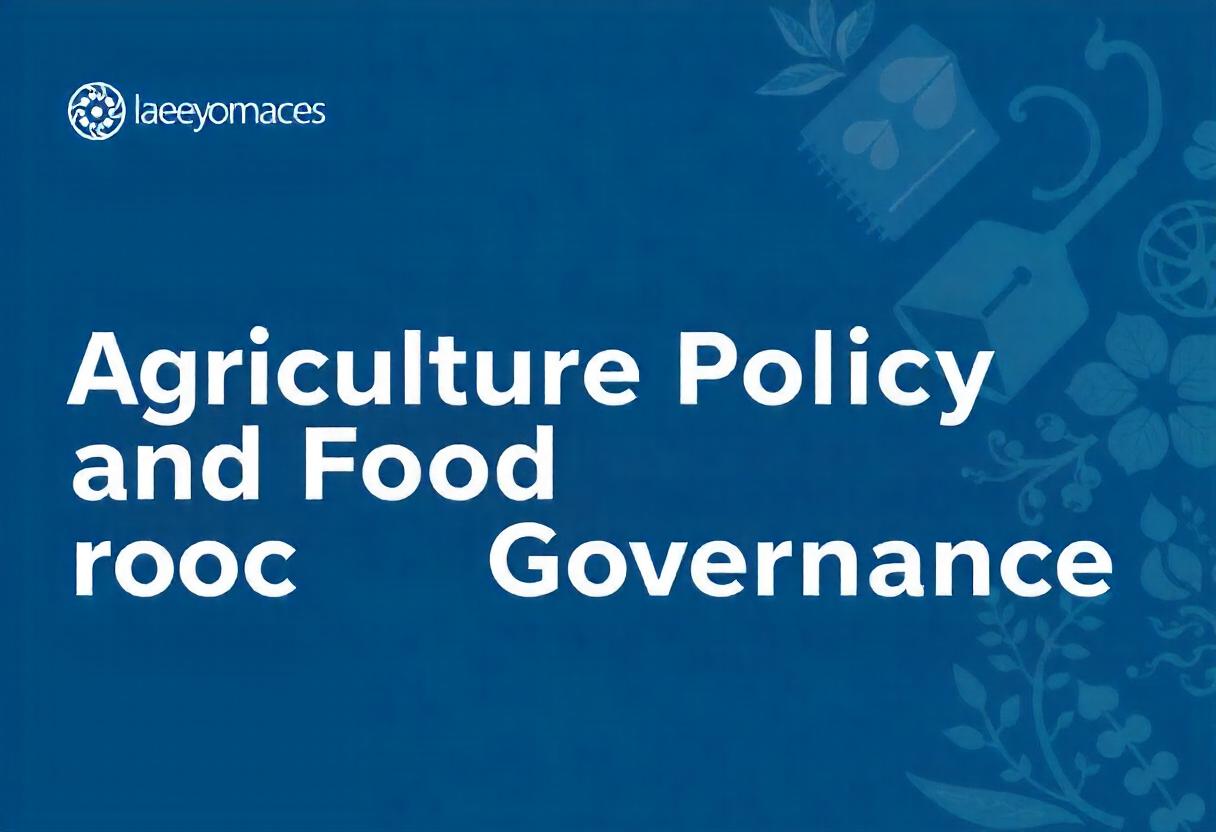
Introduction
Agriculture policy and food governance play a vital role in ensuring food security, improving rural livelihoods, and promoting sustainable agricultural practices. These policies and governance frameworks encompass various elements, including food production, distribution, trade, and consumption, all of which contribute to the broader goals of national development and environmental sustainability. This article will explore the key components of agriculture policy and food governance, shedding light on their importance in the global context.
Historical Overview of Agriculture Policy
Agriculture policy has evolved significantly over the centuries, shaped by technological advances, political ideologies, and economic considerations. In the early 20th century, many countries focused on increasing agricultural productivity through industrialization and mechanization. Post-World War II, food security became a priority, leading to the development of subsidies, trade policies, and rural development initiatives aimed at enhancing food production and distribution.
In more recent times, agricultural policies have expanded to include sustainability concerns, climate change mitigation, and the promotion of equitable access to resources. This shift has emphasized the need to balance the demands of growing populations with the preservation of environmental health.
Key Elements of Agriculture Policy
- Subsidies and Support Mechanisms Governments provide subsidies to farmers to ensure stable food production and prices. These subsidies can cover inputs like seeds, fertilizers, and machinery or take the form of financial assistance during market fluctuations. However, the distribution of subsidies often raises questions of fairness and efficiency, particularly when large industrial farms receive disproportionate support compared to smallholder farmers.
- Trade Policies Agricultural trade policies govern the import and export of food products. Protectionist measures, such as tariffs and quotas, are sometimes used to shield domestic farmers from international competition. However, trade liberalization has been a dominant trend in recent years, encouraging the free flow of agricultural goods across borders. This has implications for food security, local markets, and the global economy.
- Sustainability and Environmental Regulations Modern agriculture policies increasingly address the environmental impacts of farming. Regulations aimed at reducing pesticide use, promoting organic farming, and encouraging sustainable land management practices are becoming more common. These measures aim to protect biodiversity, water resources, and soil quality while combating climate change through carbon sequestration and reduced emissions.
Food Governance and Its Frameworks
Food governance refers to the structures, policies, and institutions that oversee the production, distribution, and consumption of food. It encompasses both national and international mechanisms designed to ensure that food systems are efficient, equitable, and sustainable.
Global Food Governance
- United Nations and FAO The United Nations (UN) plays a critical role in global food governance, primarily through the Food and Agriculture Organization (FAO). FAO works to promote food security by assisting countries in developing agricultural policies, improving rural infrastructure, and enhancing the resilience of food systems. It also coordinates international efforts to combat hunger, malnutrition, and food scarcity through programs such as the World Food Programme (WFP).
- World Trade Organization (WTO) The WTO governs international trade, including agricultural commodities. The organization works to reduce trade barriers and create a level playing field for all nations in global markets. However, its policies often face criticism for favoring wealthy nations and large corporations, sometimes to the detriment of small-scale farmers and developing countries.
- Non-Governmental Organizations (NGOs) NGOs also play a crucial role in food governance, particularly in advocating for marginalized groups such as smallholder farmers, indigenous communities, and low-income consumers. Organizations like Oxfam and the International Food Policy Research Institute (IFPRI) focus on policy research, humanitarian aid, and the promotion of fair trade practices that benefit all stakeholders in the food system.
National Food Governance
- National Food Security Policies At the national level, governments implement policies to ensure a stable food supply and affordable prices. These policies often include strategies to mitigate risks from natural disasters, climate change, and economic downturns that could disrupt food systems. National food security policies are closely tied to agricultural policies, aiming to balance production with access to nutritious and affordable food for all citizens.
- Food Safety Regulations Governments are responsible for ensuring that food products are safe for consumption. This involves implementing food safety standards, monitoring production processes, and conducting inspections to prevent contamination and foodborne illnesses. National food safety authorities work in conjunction with international organizations, such as the World Health Organization (WHO), to maintain global food safety standards.
- Social Protection Programs Many countries implement social protection programs to provide vulnerable populations with access to food. Programs such as food subsidies, cash transfers, and school feeding initiatives are designed to alleviate hunger and malnutrition, particularly in times of economic hardship or crisis.
Challenges in Agriculture Policy and Food Governance
- Climate Change and Environmental Degradation One of the most significant challenges to modern agriculture policy is the impact of climate change. Rising temperatures, erratic rainfall, and extreme weather events threaten food production worldwide. In response, many countries are incorporating climate adaptation strategies into their agricultural policies, promoting practices like drought-resistant crops, sustainable water management, and agroforestry.
- Inequality in Food Distribution Despite advances in agricultural productivity, inequality in food distribution remains a pressing issue. Disparities between wealthy and developing nations, as well as between urban and rural areas, exacerbate food insecurity for vulnerable populations. Agriculture policy and food governance must address these inequalities by promoting more equitable access to resources, land, and markets.
- Global Population Growth With the global population projected to reach nearly 10 billion by 2050, feeding everyone will require significant changes in agricultural systems. Current policies must evolve to meet the growing demand for food while minimizing environmental impacts. This will involve not only increasing food production but also addressing issues of food waste, dietary patterns, and resource conservation.